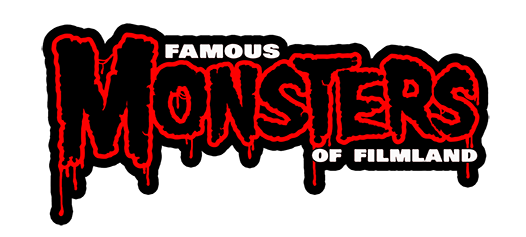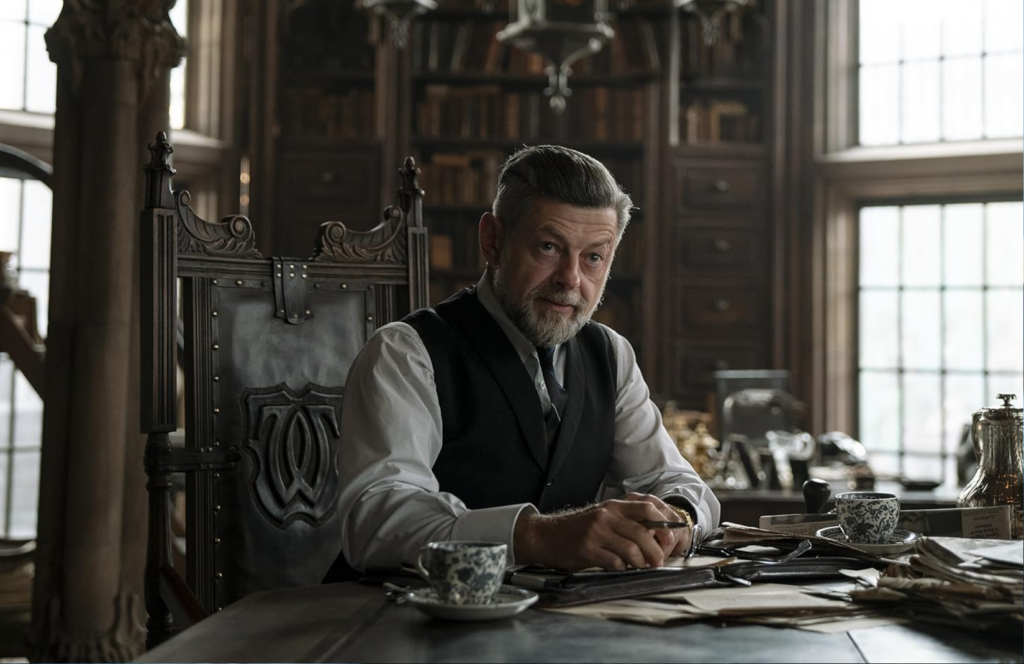Andy Serkis is a name that has become synonymous with pushing the boundaries of what it means to perform. From his groundbreaking work as Gollum in The Lord of the Rings trilogy to his directorial ventures and unforgettable performances in Planet of the Apes, Serkis has redefined the limits of storytelling.
Recently, at Famous Monsters Fest, our very own Levi Tinker—a legendary figure in cinema interviewing who has spent over two decades at the iconic TCL Chinese Theatre—sat down with Serkis to explore the defining moments of his career. It was a conversation filled with inspiration, anecdotes, and insights that any film enthusiast will treasure.
Famous Monsters: When did you first know you wanted to be an entertainer and work as an actor?
Andy Serkis: When I went to college, I actually went to study visual arts, and I thought I would be spending my life as a painter or a designer. In my first year of college, I had to take a subsidiary course, and I hadn’t realized that yet. I had to do another course. And so there was a very strong theater studies department. Yeah. And so I started designing, you know, props for their shows and posters and, you know, on the kind of behind-the-stage backstage stuff. I was gradually asked to work in various productions. Playing smaller roles. By the end of my first year, I played a significant role where I really, for the first time, fully embodied a character in a meaningful way. And that was the kind of the turning point. That was the sliding doors moment. Where I went, you know, I’ll not be standing behind a drawing board or an easel for the rest of my life. I’m gonna become an actor. And that was the moment.
Famous Monsters: Now, you have been a part of some of the biggest and most iconic movie franchises that we’ve seen now, whether it’s Lord of the Rings, Star Wars, Planet of the Apes, and you’ve King Kong. You’ve had the chance to kind of really make these incredible characters. You were one of the leading first performers to really embrace motion capture and what that can bring as an actor and performer. Can you talk about that and experience it for the first time with Lord the Rings and Gollum?
Andy Serkis: So, when I was originally asked to become a part of the Lord the Rings franchise when I first met with Peter Jackson, he said, look, one of the things that happens with actors working with CG characters is that they often have to act against nothing. There’s nothing there for them to respond to. And, he said, I don’t want to put the actors in a situation where they’re having to imagine this other character that’s there.
That drives the scenes, and there’s so much interaction between them; the emotional changes within the scenes are huge. He said, we’ve started to explore this new technology, but I want an actor to play the role. Although you wouldn’t be, it’s like you couldn’t do it with prosthetic makeup much as we’d like to because he’s so diminutive, shriveled, and thin that it would have to be a CG character. How’d you feel about that? And I was so excited by the prospect of playing the actual role. However, the technology was in its very early stages, so it evolved over the making of the trilogy. It went from me being on set and shooting all the scenes with the other actors.
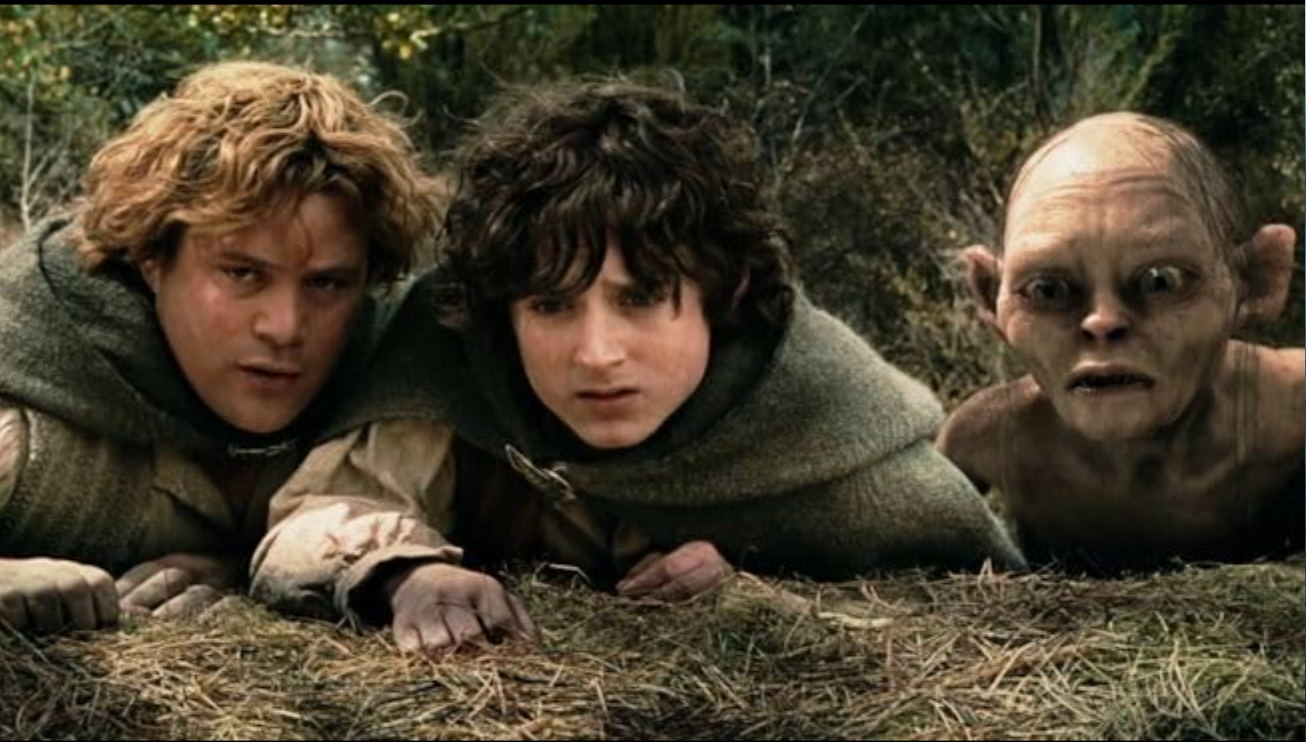
And really, that was the most important thing, which is that all of those scenes were, were, you know, were created. Three actors together are fighting it out in those scenes. and then I would go back; they would always shoot a blank pass with the other two actors. And then I’d go back onto this motion capture stage, and I remember vividly the first time. Putting on a suit, seeing on a screen, as if I was raising my right arm, I was seeing Gollum raising his right arm. And it was like, I love this. This is awesome. This is like stepping through this Alice through the looking glass. This is stepping through into another world. And it made me realize that you could completely inhabit something other than yourself. Using a form of what I would call virtual makeup. To create a character.
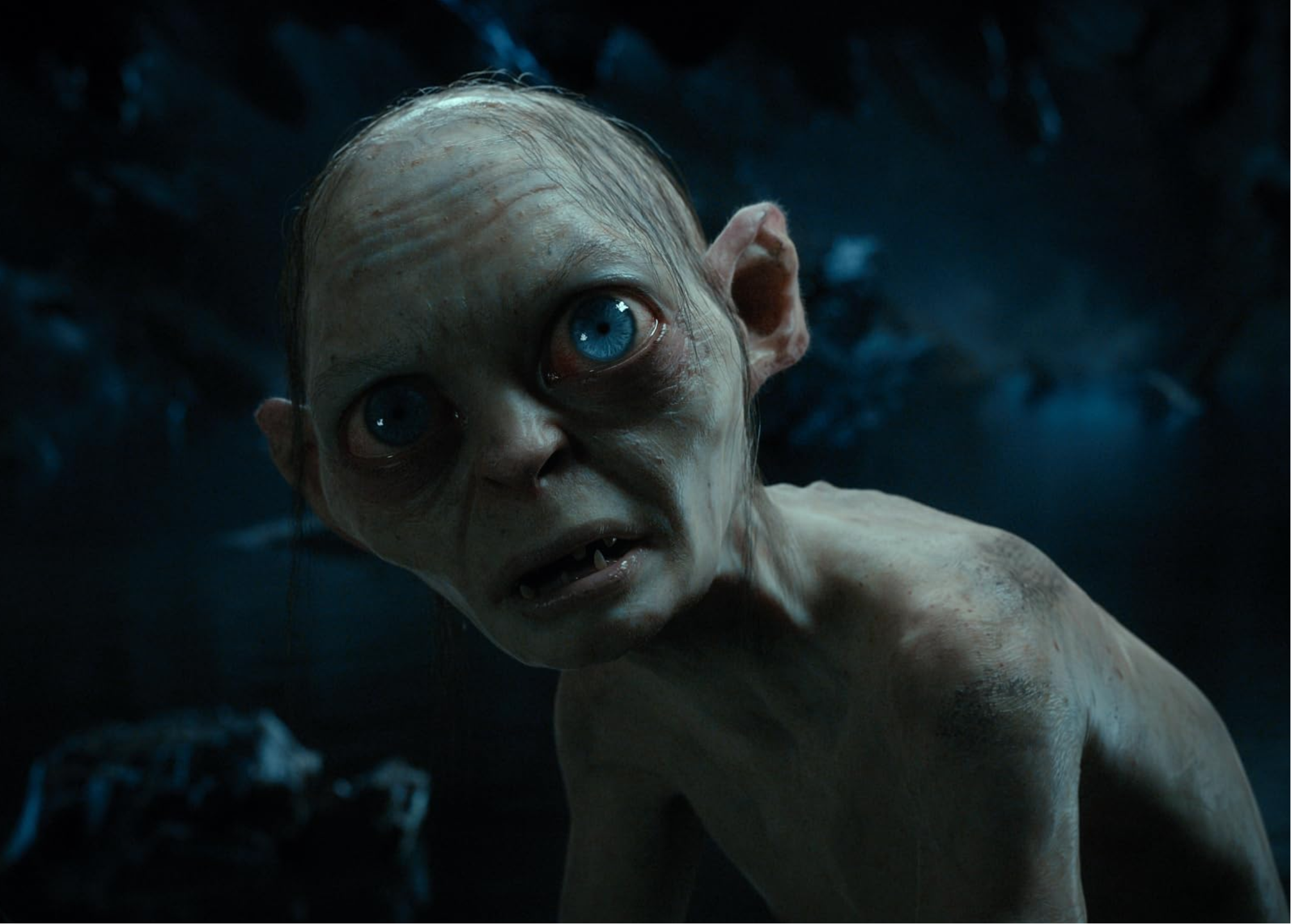
Famous Monsters: So you’ve worked with Peter Jackson several times now. What is it like collaborating with him as an actor and director?
Andy Serkis: I’ve just come back from New Zealand now. As many of you may know, we’re starting to work on a new film, a Gollum story. Which I’m gonna be directing. It’s very exciting. They are such formidable storytellers, brilliant filmmakers, and wonderful people, and there was a real sense of family when we created that trilogy. It was unlike any other filming process where you lived and breathed it for such a long period of time. And just being in the hands of such great perfectionists and people who adore the medium of film and storytelling through film
Famous Monsters: Now you actually did some second unit directing work on Lord of the Rings?
Andy Serkis: Indeed.
Famous Monsters: When did you decide that you wanted to transition into directing?
Andy Serkis: I’ve always wanted to do that. I used to make short films. Even at school, I made animations and little kinds of stop-frame and 2D animations. I’ve always, I mean, even as a painter, I always wanted to tell stories visually. And so it was, and then the whole kind of working with the visual effects teams on the Lord of the Rings Trilogy. I think then I started to make short movies with crews. And Peter knew that that was something that I’d always wanted to do. And so that’s when he asked me to. I directed the second unit on the Hobbit series.
You know, so I was gonna reprise the role of Gollum, but he also asked me to come back and direct the second unit, which was an amazing experience. We shot for 200 days. You know, pretty much straight throughout making those movies. It was overwhelming, but it was a huge education.
Famous Monsters: When Rise of the Planet of the Apes came out, it had been a while since the original series and a few years since the Tim Burton remake. What was that like coming on board for this new reimagining of Planet of the Apes? And what was that development like in bringing Caesar to life? What’s the rehearsal process for it as well?
Andy Serkis: This was a prime example of receiving the script as an actor, reading through it, and going, okay, there’s this character who’s brought up with humans. And you know, eventually, he gets separated from the person he loves most and put into a sort of prison-like environment with a bunch of other disparate apes he doesn’t know. You know that he finds himself marginalized and an outsider, and then he gradually begins to form relationships and becomes the leader of a rebellion. And then they break out, and then he leads them to freedom. And oh, by the way, he’s a chimpanzee. You know, it’s like I was reading this script, and it was such a great story with such a great character. It’s like he’s a chimpanzee.
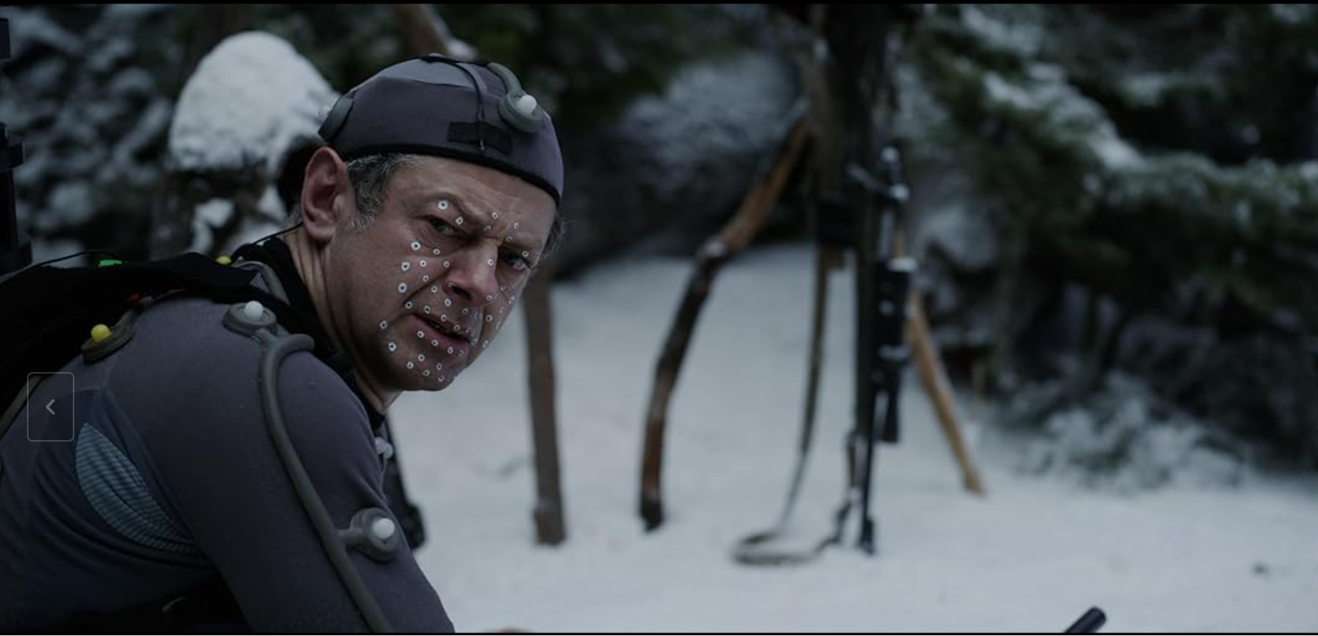
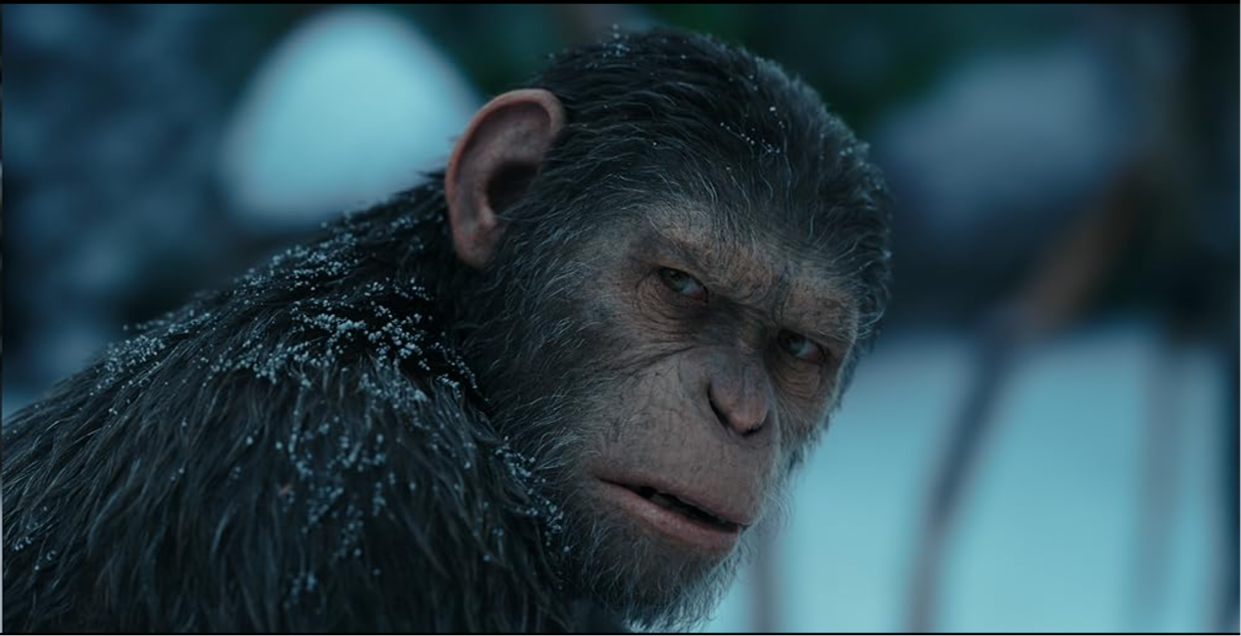
When you are playing characters like Caesar, you don’t just start with I’ve gotta be able to mimic what a chimpanzee can do. Actually, who is Caesar’s character? What does he represent? Who is he as a human being? Because he’s, in a way, he’s more human than ape.
In the first film, he’s brought up with humans. I’d already seen this at close quarters while studying apes for King Kong. So I’d been to Rwanda and studied mountain gorillas in their environment. The speed and the way that they move, the facial expressions, and the relaxed nature of how they were totally different from gorillas in a zoo that are surrounded by human beings all the time. You know, many more carry human traits because that’s all they see and reflect. And of course, we’re very, very close genetic. So the point being when, when I started working on Caesar, it was, who is this character first and foremost?
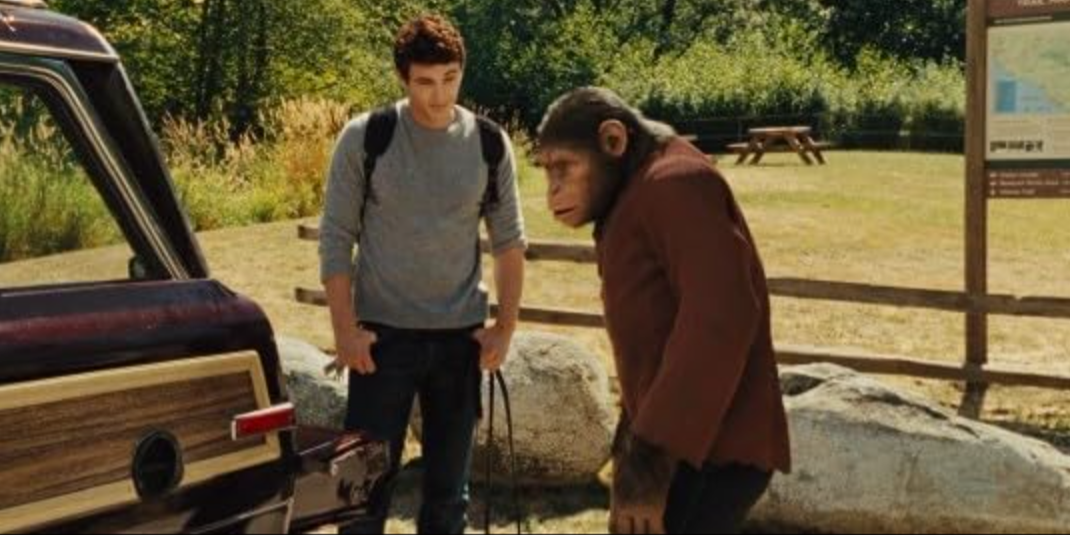
And then, you know, obviously, I’ve got to be able to move like a, a chimpanzee, and, but I based him on a real chimpanzee called Oliver, who was in the 1970s he was believed to be he was called the human Z because he had very, very human facial expressions. And he only walked on two legs. That was the other thing, which is very unusual. I mean almost unheard of that chimpanzee would only walk on two legs. But you can see documentaries of him. There’s a new documentary coming out about it. But he would walk, he would stride across, you know, if he was coming in, he’d walk across the stage, come sit down cross his legs, you know, kinda like he had this most incredible sort of physicality, this human physicality and, and, and facial expressions, which he just thought, that’s just a person think, you know, thinking and feeling and, and responding to what’s going on.
What’s Next for Andy Serkis?
With a slate of upcoming projects, including new directorial endeavors and roles as iconic as Alfred in The Batman Part II, it’s clear Andy Serkis has no intention of slowing down. He hinted at continuing to explore revolutionary storytelling methods, stating, “There’s still so much new technology and so many new stories to discover.”
Final Thoughts from Famous Monsters of Filmland
Serkis’ career serves as a guide for anyone daring to take creative risks. By constantly blending artistry and innovation, he shows us what’s possible when you pursue your passion with unrelenting commitment.
A huge thank you to Levi Tinker for moderating this in-depth interview and bringing Serkis’ remarkable story to Famous Monsters.

